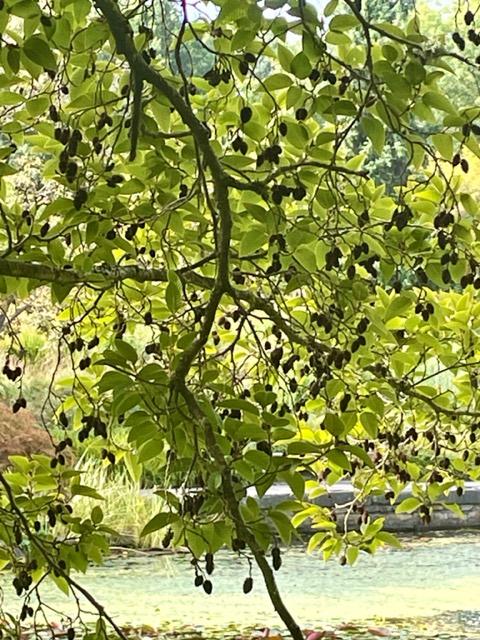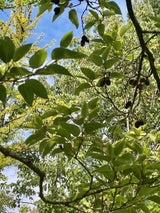- Plant IDs
- >
- ID By Type
- >
- Trees
- >
- Deciduous Trees
- >
- Alnus hirsuta var. siberica
Alnus hirsuta var. siberica
Near the garden entrance by the ginkgos, there are several Manchurian alders (Alnus hirsuta var. siberica) growing on the edge of Livingstone Lake. Alders are happiest by water. There is a bench there too. A bench by water and overhanging alder trees is one you want to sit on. Especially in fall. Small, cone-like fruit hang from the tree. These female wood cones are everywhere. When autumn light catches the back of the leaves, you are in for another treat. The leaf ribs seem to have grown and taken on a life of their own.
Our Manchurian alder trees might just be telling you to enjoy them now. Their lifespan is short. They come to the world to enrich the living things that come after them. These pioneer trees improve soil, prevent erosion, and provide shade and shelter. They grow by water, in water, and in both clay as well as infertile soil. Their tree roots add nitrogen to the soil by forming a relationship with certain soil microorganisms. Even their bark has strong antibiotic properties. Alder species were used medicinally by First Nations across Canada.
Manchurian alder is native to China, Japan, Korea and Russia. This medium-sized deciduous tree has a lifespan of just 40-60 years. Two were planted in bed 24B in 1988. They could retire early, so sit on that bench the next time you are in VanDusen. The pictures were taken in September 2023.
Text and photos by Hughie Jones.






